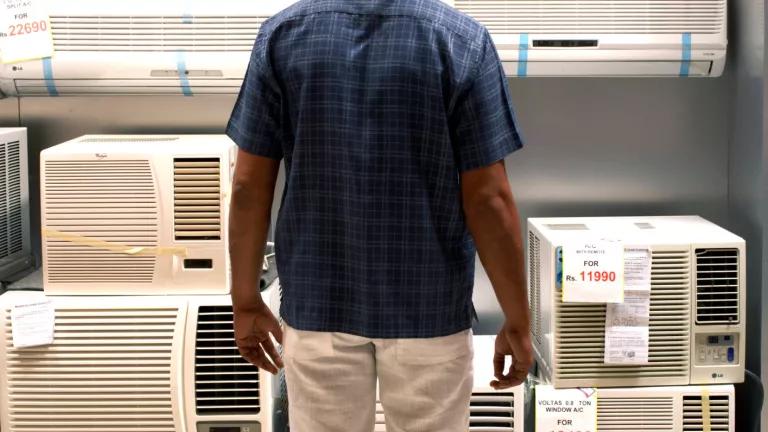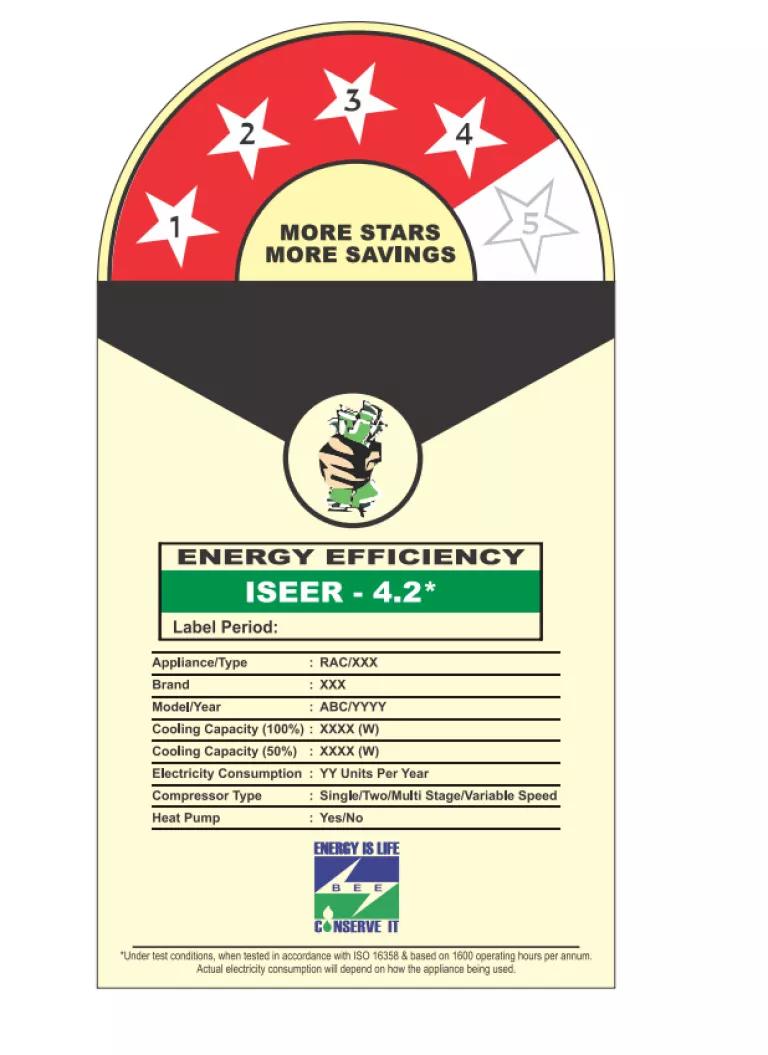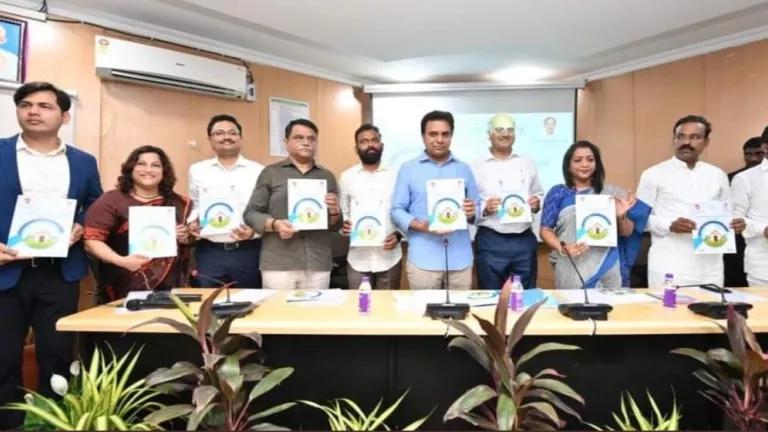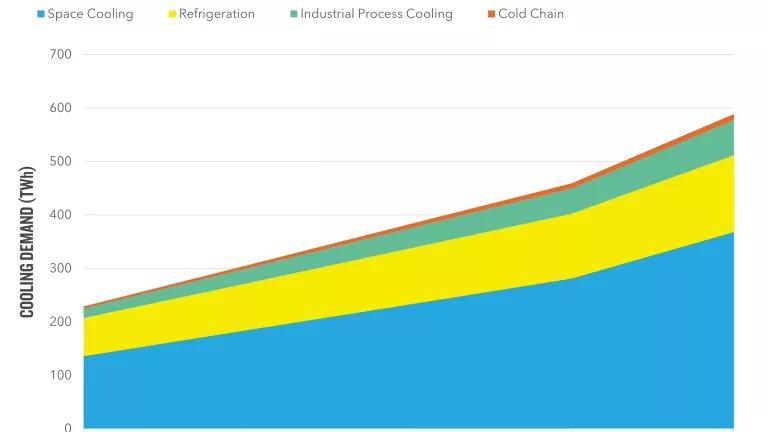Opportunities to Strengthen AC Efficiency Labels in India
In a rapidly warming world, climate friendly air conditioner are vital to providing essential cooling, while keeping greenhouse gas emissions and energy use low. However, a large number of ACs and refrigerators sold in the Indian market may not be as efficient as their labels promise. Fortunately, there are several effective solutions.

As nations convene at the Leaders Summit on Climate later this month, global carbon emissions are rapidly returning to their pre-pandemic levels. Unless the world acts boldly, decisively, and urgently, we are on track for a potentially devastating 3⁰C of warming. Emissions in India, world’s third largest emitter, are now already higher than 2019 levels. Much before peak summer, temperatures in parts of India have surpassed 100⁰F (37.8⁰C) as on date, yet millions in India do not have access to basic cooling comfort. In a rapidly warming world, climate friendly air conditioners (ACs) are vital to providing essential cooling. Nine out of ten homes in India do not have an AC, and with rising peak temperatures, cooling in India is not a luxury—it is a necessity. However, a large number of ACs and refrigerators sold in the Indian market may not be as energy efficient as their labels promise. Fortunately, there are several effective solutions to strengthen the air conditioner standards and labels program and ensure that people in India have access to cooling while avoiding excessive greenhouse gas emissions.
To achieve more sustainable, equitable, and energy efficient cooling, India's Ministry of Environment, Forests and Climate Change (MOEFCC) launched the India Cooling Action Plan (ICAP) in 2019. India’s Cooling Action Plan recognizes that the AC standards and labeling program are important tools to mitigate GHG emissions, especially as more people install ACs in their homes. India’s Bureau of Energy Efficiency (BEE) runs the AC standards and labeling programs. Since its launch in 2006, the Star Label program has impacted national energy use and increased consumer awareness on energy efficiency.

Unfortunately, an audit by an independent authority in India, found insufficient testing of labeled models, significant lag in testing after granting the label, as well as delays in the follow-up testing of non-conforming models and action with manufacturers. As a result, many non-conforming models continued to be sold. Since then BEE has taken steps to strengthen the standards and labels program, recently inviting bids for independent agencies to assist with monitoring and evaluation of the standards and labelling program. And it’s not only India that has experienced issues with standards and labeling. While many countries have measures to ensure the integrity of their standards and labeling programs, an estimated 2.2% of models across the world do not conforming with energy labels.
Based on international best practices, evaluation of India’s Standards and Labeling Program by the Collaborative Labeling and Appliance Standards Program (CLASP), and stakeholder discussions, there are several ways to strengthen compliance and check testing.
Here are five key recommendations:
- Independent testing before labeling: BEE initially relies on manufacturer energy efficiency claims to register the product and assign an appropriate Star rating. Verification (or check testing) is done, in some cases, months after the product is already in the market. While self-certification by manufacturers is used in several countries globally, many other countries require products to be tested by an independent third party before labeling. In the United States (U.S), Energy Star partners are required to pay for testing by a U.S. Environmental Protection Agency (EPA)-recognized certification. Testing by an independent third party before labeling could ensure that poor products do not get released into the marketplace with a false label.
- Increased AC manufacturer accountability: In a competitive market like India with major domestic and international players vying for market share, it is in the interest of every brand to ensure that their product performs as promised on the label. To avoid nonconformance and negative publicity, air conditioner companies could rigorously test their models before they reach the market. In case of nonconformance, manufacturers should expedite either correcting the label or withdrawing the model from the market. Prompt and strong action by the industry would help enhance consumer trust in the brand. Manufacturers may also work with each other and BEE to identify models known or suspected to be noncompliant.
- Increasing capacity for third party testing and accredited labs: Currently, BEE empanels labs based on an open tender on a periodic basis. Building lab testing capacity is important for not just air conditioners but several other key components of the built environment. Since many air conditioner players are multinationals, there is an opportunity for India to provide a longer-term accreditation to more labs in the country, and even in other countries in the region as well.
- Increasing institutional capacity: Funding from the Indian government as well as climate finance institutions such as multilateral and bilateral development banks and the green climate fund can help augment institutional capacity for implementing efficiency programs. BEE has played a pioneering role in implementing energy efficiency programs and, in the past, technical collaboration programs such as the US-India PACE-D initiative have made tremendous impact. With the US and India reengaging on climate change, strengthening energy-efficiency programs is a major opportunity for further collaboration.
- Strengthening state level compliance mechanisms: India’s Energy Conservation Act of 2001 provides the legal framework for the labeling program and empowers State Designated Agencies (SDAs) to conduct market surveillance and enforce its provisions. Several SDAs also implement renewable energy, in addition to energy efficiency goals. Thus, these SDAs have a vital role in advancing clean energy at the local level. Providing adequate technical and resource capacity to the state agencies can help in effective implementation and complement BEEs efforts at the national level.
Energy efficiency labels demonstrate compliance with government regulations and help consumers maximize energy savings when purchasing appliances such as an AC. If the labels are undermined, both consumers and the environment suffer as a result. Effective execution of BEE’s popular Standards and Labels program is key in extending sustainable cooling access in the country and lessons from global experiences and stakeholder feedback can help make the program more effective.
With contributions from Charlotte Steiner




